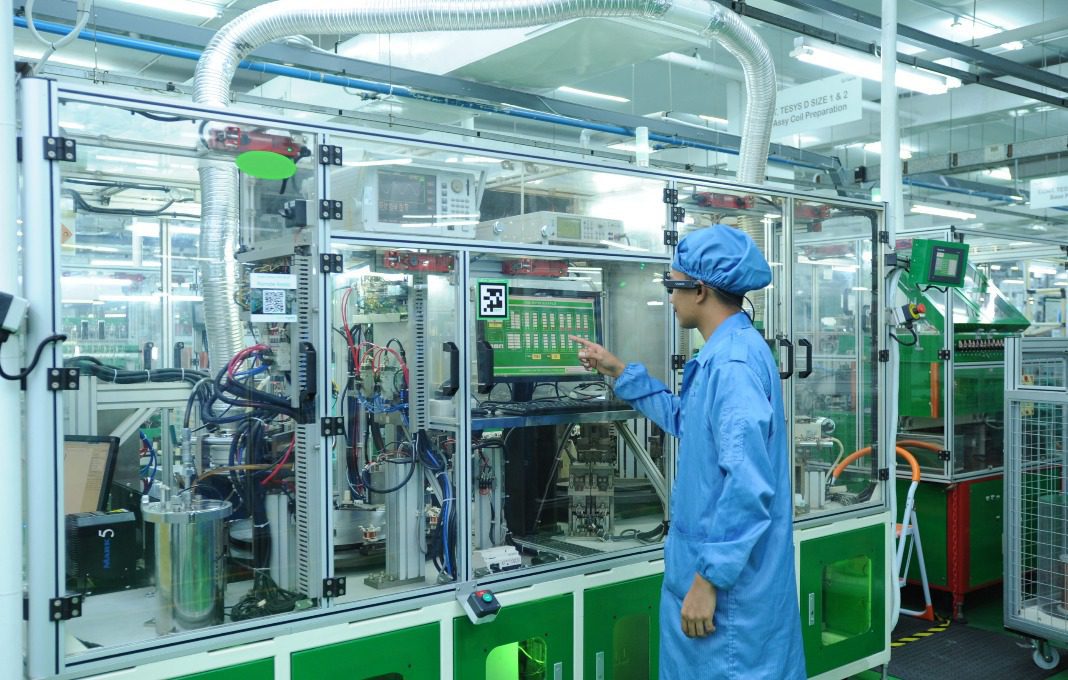 The manufacturing community recognizes the need for beacons to pull the global economy out of the pall cast by Covid-19. Schneider Electric has been responding with so-called “lighthouse factories” that demonstrate how the digital industrial revolution can proceed from here. Schneider’s “smart factory” in Lexington, Kentucky, recently became the third of the company’s plants worldwide to be designated as such, and it’ll also be the recipient of millions more dollars in corporate investment as Schneider Electric seeks to strengthen its U.S. supply chain.
The manufacturing community recognizes the need for beacons to pull the global economy out of the pall cast by Covid-19. Schneider Electric has been responding with so-called “lighthouse factories” that demonstrate how the digital industrial revolution can proceed from here. Schneider’s “smart factory” in Lexington, Kentucky, recently became the third of the company’s plants worldwide to be designated as such, and it’ll also be the recipient of millions more dollars in corporate investment as Schneider Electric seeks to strengthen its U.S. supply chain.
Specifically, Schneider Electric’s Kentucky facility recently earned a distinction granted by the World Economic Forum to factories that advance technologies that are central to what the global think-tank organization calls the “4th Industrial Revolution. Producing industrial electrical equipment such as load centers and safety switches, the Lexington factory has adopted approaches to demonstrate benefits around energy efficiency, sustainability and overall cost savings, the company said, “while offering increasing agility and resiliency within the operation.”
“This was a 62-year-old factory where we took a brownfield site and reduced operating costs, energy usage and production down time and broke down barriers to how data was shared in the factory,” Annette Clayton, CEO and president of Schneider Electric North America, the Boston-based arm of the French giant based in Rueil-Malmaison, told Chief Executive. “These are driving great efficiencies in the factory.”
Schneider is a leader in the digital transformation of energy management and automation and so is using the Lexington plant as a showcase for its customers, and others, in addition to reaping the benefits of running a world-class plant. Employing nearly 500 people, the plant is smart and integrated, relying on digital tools such as augmented reality – which empowers operators to gain visibility into operations maintenance – to drive a 20-percent reduction in the mean time to repair critical equipment. Process digitization has cut paperwork by 90 percent.
While Schneider previously established lighthouse factories in other countries, Clayton said, “North America probably is now at the forefront of this movement for the company because we’re further away from some of the lower-cost parts of the world. So we’ve accelerated the work here and are leading the work of the company.”
The Lexington factory is also on the forefront of Schneider’s just-announced plans to invest an additional $40 million in modernizing its U.S. manufacturing plants that also include facilities in Iowa, Nebraska and Texas. The company wants to make its supply chains more resilient in the wake of Covid-19, “we have fewer interruptions in our supply chain not only from our own ability to run these facilities but also to run them as close as possible to the point of consumption,” Clayton said.
“We have 30 factories in the United States, and so we have a lot of the supply chain occurring locally. What we’ve really looked at is more of a multi-shoring strategy, not one-size-fits all. It’s designed to create more resilience in the efficiency of how the factory is run itself.”

Chief Executive Group exists to improve the performance of U.S. CEOs, senior executives and public-company directors, helping you grow your companies, build your communities and strengthen society. Learn more at chiefexecutivegroup.com.
0

1:00 - 5:00 pm
Over 70% of Executives Surveyed Agree: Many Strategic Planning Efforts Lack Systematic Approach Tips for Enhancing Your Strategic Planning Process
Executives expressed frustration with their current strategic planning process. Issues include:
Steve Rutan and Denise Harrison have put together an afternoon workshop that will provide the tools you need to address these concerns. They have worked with hundreds of executives to develop a systematic approach that will enable your team to make better decisions during strategic planning. Steve and Denise will walk you through exercises for prioritizing your lists and steps that will reset and reinvigorate your process. This will be a hands-on workshop that will enable you to think about your business as you use the tools that are being presented. If you are ready for a Strategic Planning tune-up, select this workshop in your registration form. The additional fee of $695 will be added to your total.

2:00 - 5:00 pm
Female leaders face the same issues all leaders do, but they often face additional challenges too. In this peer session, we will facilitate a discussion of best practices and how to overcome common barriers to help women leaders be more effective within and outside their organizations.
Limited space available.

10:30 - 5:00 pm
General’s Retreat at Hermitage Golf Course
Sponsored by UBS
General’s Retreat, built in 1986 with architect Gary Roger Baird, has been voted the “Best Golf Course in Nashville” and is a “must play” when visiting the Nashville, Tennessee area. With the beautiful setting along the Cumberland River, golfers of all capabilities will thoroughly enjoy the golf, scenery and hospitality.
The golf outing fee includes transportation to and from the hotel, greens/cart fees, use of practice facilities, and boxed lunch. The bus will leave the hotel at 10:30 am for a noon shotgun start and return to the hotel after the cocktail reception following the completion of the round.